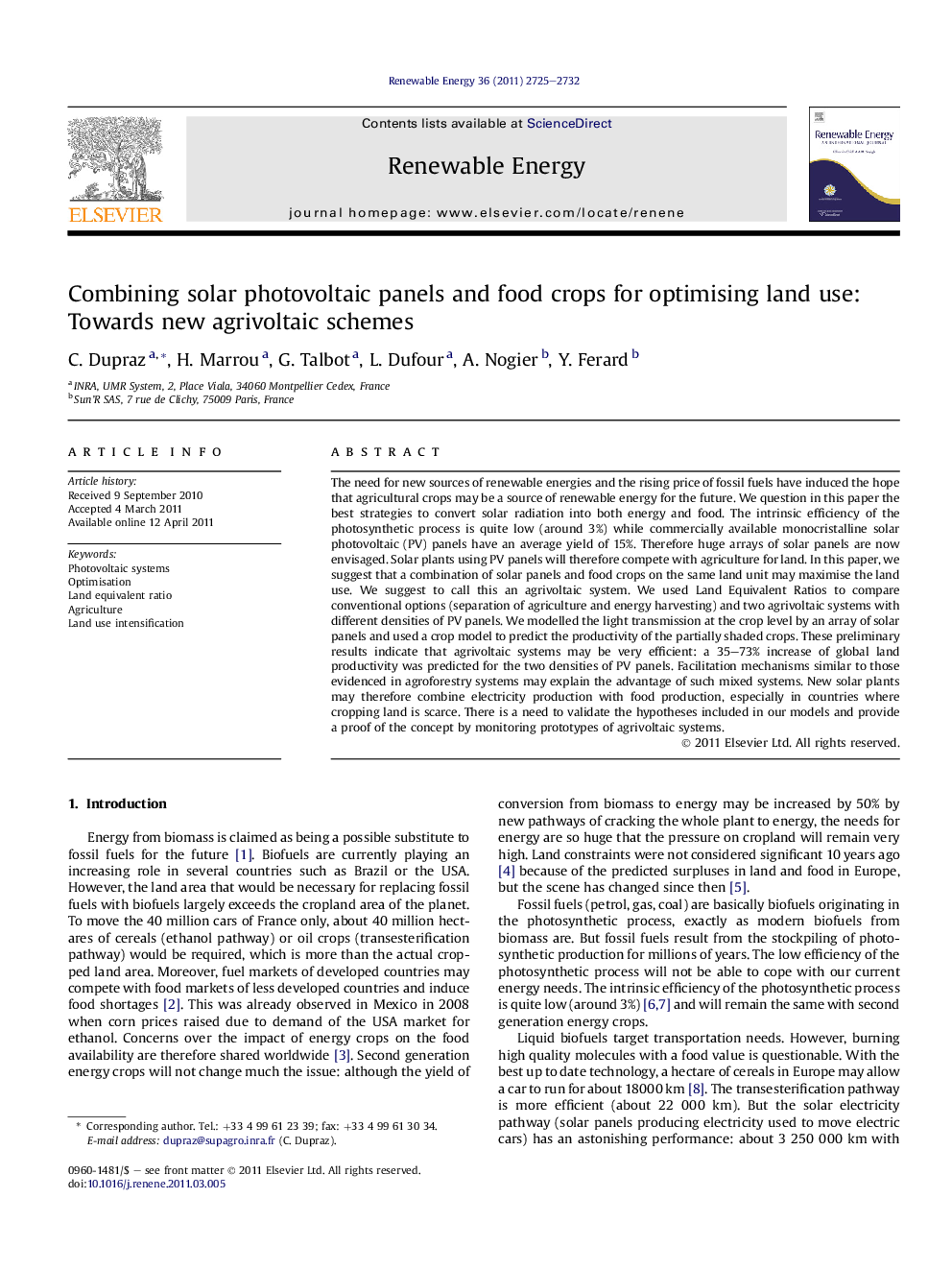| Article ID | Journal | Published Year | Pages | File Type |
|---|---|---|---|---|
| 301503 | Renewable Energy | 2011 | 8 Pages |
The need for new sources of renewable energies and the rising price of fossil fuels have induced the hope that agricultural crops may be a source of renewable energy for the future. We question in this paper the best strategies to convert solar radiation into both energy and food. The intrinsic efficiency of the photosynthetic process is quite low (around 3%) while commercially available monocristalline solar photovoltaic (PV) panels have an average yield of 15%. Therefore huge arrays of solar panels are now envisaged. Solar plants using PV panels will therefore compete with agriculture for land. In this paper, we suggest that a combination of solar panels and food crops on the same land unit may maximise the land use. We suggest to call this an agrivoltaic system. We used Land Equivalent Ratios to compare conventional options (separation of agriculture and energy harvesting) and two agrivoltaic systems with different densities of PV panels. We modelled the light transmission at the crop level by an array of solar panels and used a crop model to predict the productivity of the partially shaded crops. These preliminary results indicate that agrivoltaic systems may be very efficient: a 35–73% increase of global land productivity was predicted for the two densities of PV panels. Facilitation mechanisms similar to those evidenced in agroforestry systems may explain the advantage of such mixed systems. New solar plants may therefore combine electricity production with food production, especially in countries where cropping land is scarce. There is a need to validate the hypotheses included in our models and provide a proof of the concept by monitoring prototypes of agrivoltaic systems.
► Agrivoltaic (AV) systems mix solar photovoltaic panels and crops on the same land unit. ► A land equivalent ratio of AV systems is a measure of their efficiency. ► Ex ante modelling predicts a very high productivity of such AV systems. ► AV may be a win–win option to alleviate the pressure on cropland for energy production.
